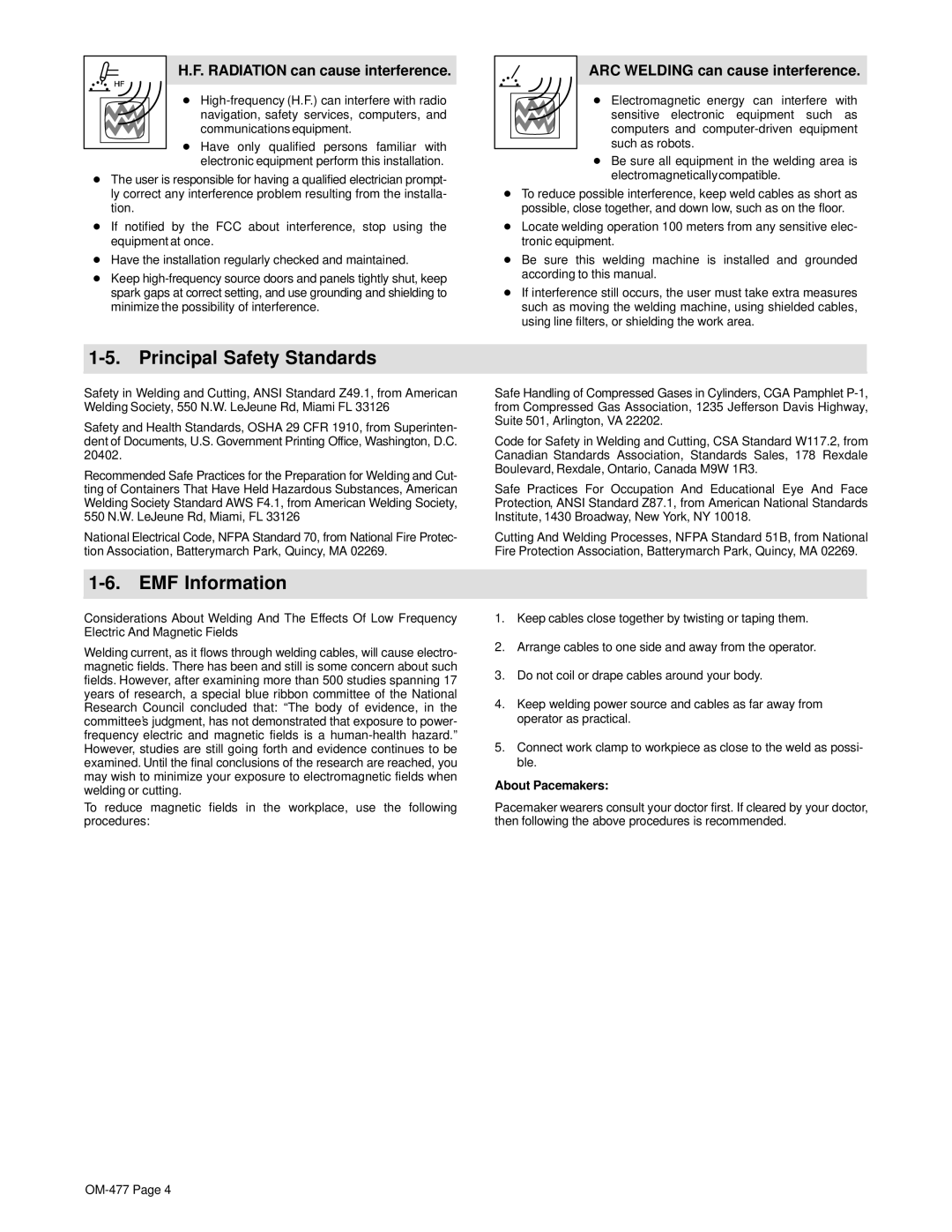OM-477 specifications
Hobart Welding Products has long been recognized for delivering high-quality welding equipment tailored to the needs of both professionals and DIY enthusiasts. Among its distinguished offerings is the OM-477, a versatile multi-process welder designed to excel in a variety of welding applications. This machine integrates an array of features and technologies that cater to both novice and experienced welders.One of the defining characteristics of the OM-477 is its multi-process capability, which allows users to perform MIG, TIG, and stick welding with ease. This flexibility makes it an ideal choice for a wide range of projects, from automotive repair to light fabrication tasks. The seamless transition between processes is facilitated by a user-friendly interface that simplifies the selection and adjustment of settings, ensuring a smoother workflow.
The OM-477 is powered by a robust, industrial-grade inverter technology that provides high arc stability and increased energy efficiency. This not only enhances performance but also reduces power consumption, making it an environmentally friendly option. Welders can operate at various output ranges, accommodating different materials, including mild steel, stainless steel, and aluminum, thus ensuring versatility in project execution.
Another notable feature of the OM-477 is its portability. Weighing in at a manageable size, this welder is equipped with a durable carry handle, allowing for easy movement between job sites or within the workshop. This characteristic complements its user-friendly setup, making it accessible for individuals of all skill levels.
Safety is a pivotal aspect of the design of the OM-477. It incorporates multiple safety features such as a thermal overload protection mechanism, ensuring that the machine operates well within safe parameters. This is crucial for preventing overheating, thereby extending the welder's lifespan and reducing maintenance costs over time.
Additionally, the OM-477 offers precise control over welding parameters, enabling users to fine-tune their settings for optimal results. Whether tackling thin sheet metal or thicker materials, the welder’s adjustment capabilities ensure a clean, professional finish.
In summary, the Hobart OM-477 stands as a testament to innovative welding technology, combining multi-process functionality, inverter efficiency, portability, and safety into a single machine. It is a reliable tool designed to empower welders at any skill level, making it a worthy addition to any welding arsenal. With the OM-477, Hobart Welding Products continues to champion quality and user satisfaction in the welding industry.

